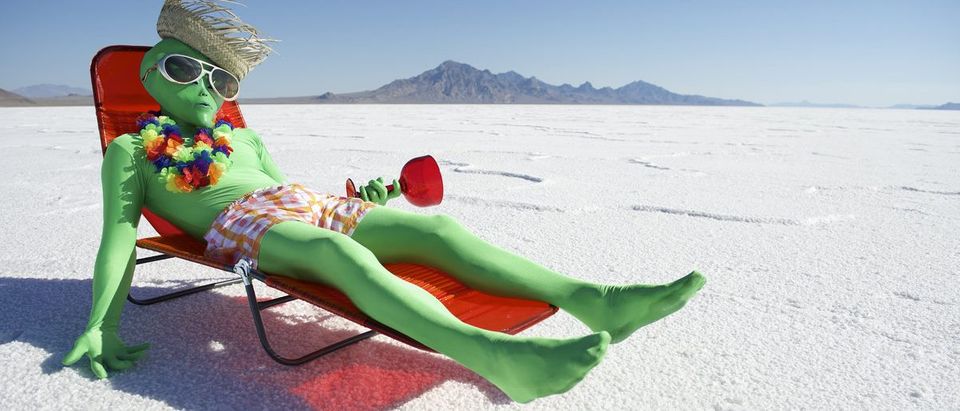Alien life on the potentially habitable “second Earth” just got a lot more likely, according to new research published Tuesday.
Researchers at Blue Marble Institute of Space Science conducted thousands of simulations of the impact of solar flares, space weather and orbital mechanics on “Planet b” and concluded it’s possible for alien life to exist there.
Powerful solar flares that strike Planet b, however, probably mean that only primitive life forms live there.
“The results show a wide range of surface radiation doses on planets in close-in configurations with varying atmospheric column depths, magnetic moments and orbital radii,” states the abstract. “It can be concluded that for close-in exoplanets with sizable atmospheres and magnetospheres, the radiation dose contributed by stellar superflares may not be high enough to sterilize a planet (for life as we know it) but can result in frequent extinction level events.”
Proxima b has been considered a good candidate for supporting life — initial reports suggested it has a rocky surface, is close in size to Earth and circles its star closely enough to be relativly warm. However, the research suggests that if life does exist there, it would be subject to frequent planet-wide extinction-level events. If alien life does exist on Proxima b, it would probably be similar to Earth’s microbes.
For the vast majority of its history, life on Earth was relatively primitive. The earliest potential evidence of life on Earth is 3.5 billion years old, but the first multi-cellular animals did not appear until about 600 million years ago and were not diversified until roughly 542 million years ago in the Cambrian “explosion.”
The research was published in a paper in Monthly Notices of the Royal Astronomical Society.
Astronomers announced the discovery of a potential “second Earth” in August after finding a slight “wobble” of gravity tugging on the star Proxima Centauri, the star closest to Earth other than the Sun. This indirect method of detection means scientists don’t currently know if the planet, called “Proxima b,” has an atmosphere or possesses a magnetosphere, but there’s already a lot speculation about the possibility of life on the planet.
Since Proxima Centauri is seven times smaller than the sun, the planet is likely in the “Goldilocks Zone,” the region around a star that has just the right conditions to find liquid water on a planet’s surface.
This greatly influences the potential for life. If microbial life did develop on Proxima b, the harsh conditions may have permanently locked it into a relatively primitive form, NASA scientists previously told The Daily Caller News Foundation.
Though Proxima b’s year only lasts 11.2 days, it probably has an average surface temperature of around minus 40 degrees Fahrenheit, which is enough to allow liquid water to exist in places on the planet. This greatly influences the potential for life. If microbial life did develop on Proxima b, the harsh conditions may have permanently locked it into a relatively primitive form, NASA scientists previously told TheDCNF.
Although Proximba b is by far the closest potentially habitable exoplanet to our solar system, but it would still take more than 1,000 years to arrive using today best rocketry developed, according to Universe Today. If there were technologically advanced aliens living on Proxima b, it would take 4.6 years for any radio signals sent from Earth to reach them.
Send tips to andrew@
All content created by the Daily Caller News Foundation, an independent and nonpartisan newswire service, is available without charge to any legitimate news publisher that can provide a large audience. All republished articles must include our logo, our reporter’s byline and their DCNF affiliation. For any questions about our guidelines or partnering with us, please contact licensing@dailycallernewsfoundation.org.


